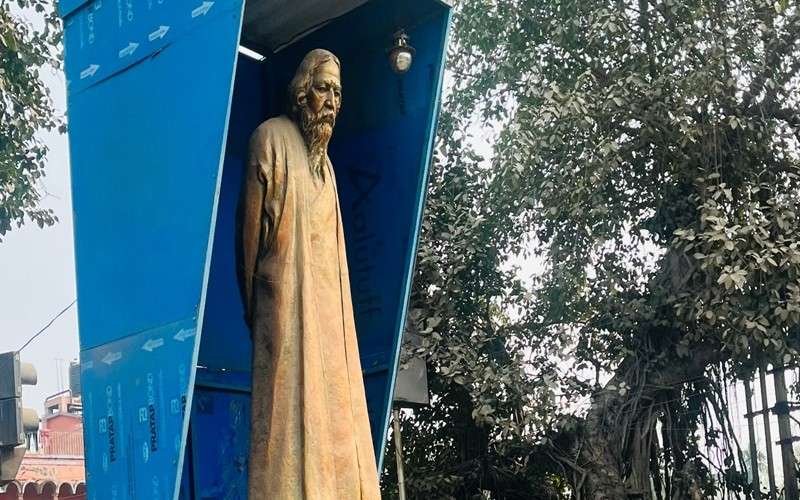Shantiniketan in 2 Days: A Peaceful Getaway from Kolkata

Some getaways don't begin with a plan - they begin with a pause. That's exactly how this trip to Shantiniketan started. After the chaos of city life, we were looking for something slower, softer. Just few hours away from Kolkata, Shantiniketan gave us exactly that - a pocket of peace wrapped in red soil, baul music, and Rabindranath Tagore's timeless memories.
Day 1: A Scenic Ride & Shantiniketan's Artistic Soul
We caught the Shantiniketan Express from Howrah at 10:10 AM - a smooth, quiet ride that carried us past green fields and village rooftops. By 12:30 PM, we arrived at Bolpur Station, welcomed by the warm winter sun. Vasant (spring) is one of the most pleasant times to visit Shantiniketan, when the trees are in bloom and the air feels especially gentle.
Our first stop was Hotel Utsav, tucked away just far enough from the bustle. Clean rooms, warm local hospitality, and a garden that felt like it hadn't been rushed in years - it was where you could unpack slowly and breathe deeper. Hungry from the journey, we made our way to Ram Shyam Restaurant, a local favourite near Sonajhuri. Their mutton curry was full of warmth and spice, paired with rice, a seasonal sabzi, and finished off with mishti doi - pure comfort on a plate.
In Shantiniketan, even silence speaks - through rustling leaves, blooming palash flowers, distant Baul melodies, and red dust that remembers every step. Just before Basant Utsav (Holi), the town doesn't just prepare — it blossoms.
In the afternoon, we explored Visva Bharati University, Rabindranath Tagore's dream project and now a living museum of art, literature, and philosophy. We walked through Rabindra Bhavana, where his handwritten poems, photographs, and articrafts are preserved with quiet reverence. The red-earth paths, leafy courtyards, and distant strains of Baul music made the campus feel less like a university and more like a poem.
We ended the day at Sonajhuri Haat, the weekend tribal market nestled beneath tall sal trees. Between flickering lanterns, rhythmic tribal drums, and handmade crafts, Shantiniketan gently slowed us down and held us there.
5 Days in Coorg & Wayanad – An Epic Group Trip Through the Hills – Read MoreDay 2: Tagore's Legacy, Local Crafts & Farewell Notes
We woke up early to the sound of birds and rustling leaves — no alarms needed. After a simple breakfast at the hotel, we headed to Amar Kutir, a cooperative society that promotes rural art and craft. From leather bags to handmade notebooks, the place celebrated everything.
Later, we strolled along the Kopai River, letting the red soil stain our shoes and the wind tangle our thoughts.
For lunch, we decided to return to Ram Shyam Restaurant — because sometimes, one meal isn't enough. This time we went for their vegetarian thali and kochi pathar jhol (young goat curry).
We had some time left before our return train, so we made a quick visit to Kala Bhavan, the fine arts faculty at Visva Bharati. Students painted in open studios, sketches leaned against trees, and installations sat quietly in courtyards. It felt raw, real, and wonderfully uncurated.
By evening, we boarded the Shantiniketan Express back to Kolkata. As we looked out the window one last time, the red soil, the soft music, and Tagore's quiet legacy whispered, "Come back when the world gets too loud."
Shantiniketan isn't just a destination - it's a respite, a reminder that sometimes the most meaningful journeys are the ones that teach you to slow down.The Ultimate Kolkata Travel Guide: 4 Days of History, Art, and Street Food – Read More